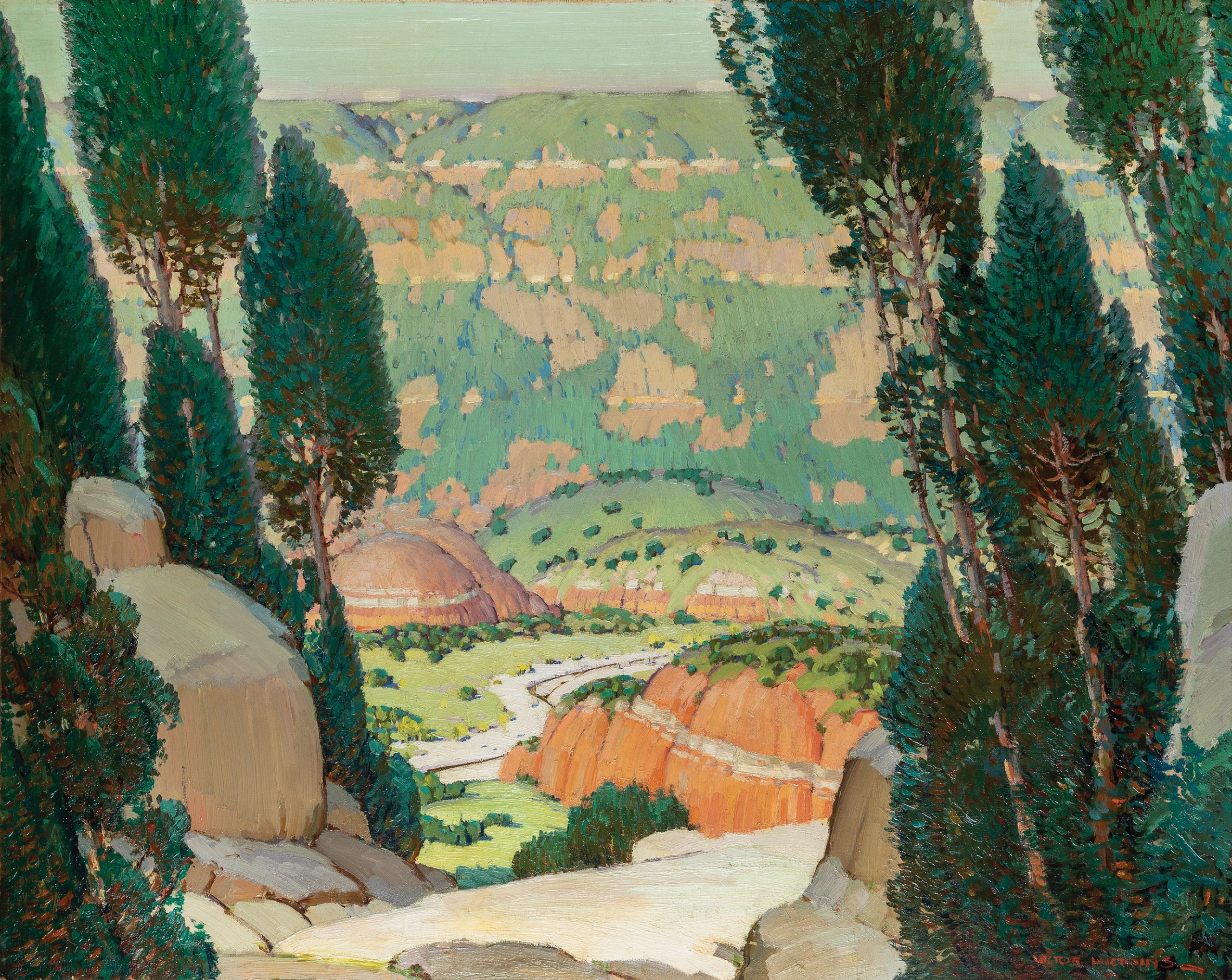
29 Oct Collector’s Notebook: Think Like a Curator
Artists often do some odd things that can appear counterintuitive or even self-destructive — like inviting you over to see their latest work, then refusing to sell it to you. This isn’t a ploy to get you to pay more (though it might be). More likely, it’s because they believe the work in question is a pinnacle piece; the last thing they want is for it to disappear into someone’s private collection.
Not all artists do this. You tend to see it more with well-established artists, who know their legacy depends on placing work in museum collections. The collector’s conundrum: These are the works of art you want to add to your collection because they have the best potential to grow in value over time, and will be coveted by museums, which means you can earn provenance by loaning them for major exhibits and can use them for donations should you need a tax write-off.
Learning to identify and acquire these precious works, whether for yourself or your favorite museum, is what we’re exploring here. Essentially, to reach this level of collecting, you need to think like a museum curator. We spoke with Laura Fry, Vice President of Curatorial Affairs at the Eiteljorg Museum of American Indians and Western Art; and Dakota Hoska, Curator of Native American and Global Indigenous Art for the National Gallery of Art in Washington, D.C., to gather some insights.
WHAT’S SO SPECIAL ABOUT MUSEUM CURATORS?
“I give this talk to docents called What Does a Curator Do?” says Laura Fry. “Curator has become such a buzzword — even Starbucks ‘curates’ your coffee — that it’s led to an oversimplification of the word to mean someone who just buys stuff they like. But the role brings connoisseurship to the museum and public with curators who have specific expertise, technical knowledge, and the storytelling chops that link the art to the museum on the whole.”
Nothing against baristas, but museum curators are the real deal. These women and men hold a minimum of a master’s degree in art history, museum studies, or a related field, and most possess a Ph.D. But don’t be nervous around them; curators love to discuss their latest research, exhibition ideas, or new discoveries in art preservation and collections management. Some curators speak multiple languages, and many have vast institutional knowledge of art and objects within their specialty. Best of all, they tend to know where the finest art and objects reside in collections around the world — and if you’re lucky, you might get to join them on one of these trips into private collections.
MUSEUM WORTHY
When it comes to acquiring art, museum curators and private art collectors work on opposite sides of the same coin. When acquiring art for museums, curators draw on their vast expertise to strengthen a collection by adding missing works of art that help tell a bigger story. Private collectors would be wise to examine their own collections with a critical eye and ask: What is missing? What would strengthen the story I’m trying to tell? For example, adding paintings by living artists to a collection of works by deceased artists can help expand the conversation by offering another perspective.
When it comes to getting their work into museums, lots of artists will tell you that museum curators are the gatekeepers of the art world — and they don’t necessarily say this with admiration. Because getting art in a museum collection is a significant boost to an artist’s career (think of it as the Michelin star rating of the art world), collectors should pay attention to what museums are collecting and exhibiting.
Having said that, museum curators don’t relish the idea of being gatekeepers or tastemakers. And post-COVID, museums, says Fry, want to retire that idea. “I think the museum world gained this reputation as gatekeepers, but more recently, we are trying to dismantle that notion and create ways people can access art through programming, workshops for people of all ages, even by changing what we have in the gift shop.”
So, what makes a work of art worthy of being collected by a museum? “People always ask this question, but there is no one right answer,” Fry says. “Art goes through trends, even historical art. What makes something museum-worthy is nuanced. And, too, we could be offered the most amazing work of art by an incredible artist, but if it doesn’t fit our mission, or we already have that area covered, we won’t take it.”
Dakota Hoska echoes Fry’s comment and adds, “I believe that there are works that have something special, but undefinable. There’s something so innately remarkable about them that many people can immediately recognize their importance. Although I have been a curator for many years, this secret ingredient is often elusive to me and my colleagues.”
DEFINING THE UNDEFINABLE
You may not care if your collection is museum-worthy or gains value over time. But, still, it might not hurt to stand back and apply a curator’s logic to big purchases. Front and center is the museum’s mission. Defining and applying a mission or objective to your private collection is a great way to guide future purchases. Hoska, who is Indigenous, says that her job as curator means acquiring art that helps others understand the interconnectedness of all people, not just in America, but globally. So, instead of narrowing the scope, Hoska must consider art across North American Indigenous communities, including Canada, since tribes and nations freely crossed today’s borders.
“To do this,” she says, “I will rely heavily on the opinions and insights of Indigenous people around this country and into Canada. Collectively, we are now at the National Gallery of Art. I may be the point person for this collection, but I’m just the prow of the boat. Indigenous people and the wider community are the ones pushing this point forward with their weight and knowledge.”
MAKE A PLAN
Establishing a personal plan and vision for your collection may sound excessive, but it can serve two purposes simultaneously: bring focus and help you cull works that no longer serve that focus.
Museum plans often start by reflecting on their mission and what distinguishes them from other museums. For a personal collection, this involves defining your aesthetics and interests. When Fry took over curatorial duties at the Eiteljorg last year, she brought extensive knowledge of Western American art and history, leading her to consider collections by asking what makes something “Western” and what the Eiteljorg can uniquely contribute to the conversation. “At one time,” Fry says, “Indiana was one of the westernmost states. So, the museum’s focus on art of the American West can also connect to the story of Indiana.”
Sharing that bigger story can be challenging. At the National Gallery, Hoska is considering how to elevate foundational Indigenous artists from the 1900s onward and how collecting their works will complement the rest of the collection, sparking visitors’ curiosity and encouraging them to learn more about the Indigenous experience. “The National Gallery of Art has a reputation of absolute excellence,” she says. “So, keeping that in mind as I’m curating this collection will be a primary focus.”
DIGGING DEEPER
“Lead storyteller” would be a fitting subtitle for any curator. One question Hoska often asks before proposing acquisitions is: Does the work tell a lasting story that will appeal to people now and well into the future? “I don’t mean the work itself will be narrative,” she says, “but it may be indicative of something that we can or should collectively remember, learn from, or grow from as humans.”
The next question — and this goes back to those things you can’t buy — is whether a piece is a major or pivotal work by that artist. “The work should be exemplary for what it is trying to say and/or for the artistic movement it represents,” Hoska explains. “For instance, Kiowa people are known for the simple elegance of their beadwork and their precision. If I were to collect a historic Kiowa piece, I would not only look for it to be beautiful or eye-catching, but I would also look for it to be indicative of the excellence of Kiowa historic beadwork. On the other hand, if I were looking at an artist who was working to refute preciousness, I would be looking for them to do that in an innovative and exceptional manner.”
And part of what makes a work exceptional is its ability to push boundaries and challenge visitors to think critically and ask questions. “If an artist is settled into one thing and repeats that ad nauseam,” Hoska says, “I am less interested than when an artist continues to push themselves. I think this is a good indicator of a great artist. That’s not to say everything they make will be great, but that they are not afraid to push the boundary in some way.”
DIRECT LINE
Want a direct line to your favorite curator? Visit museums that collect art you are also passionate about. Then become a member and find out if they have a collections support group you can join. Be prepared to pony up some serious cash for the privilege of joining these groups. But if you’re a serious collector and want to minimize mistakes when collecting, this kind of access — which includes behind-the-scenes tours, private dinners, and discussions about art and artists the curator wishes to add — is worth every penny. Plus, you get to help your favorite museum preserve a slice of modern life, which will one day be history.
Curator and writer Rose Fredrick shares her extensive knowledge about the inner workings of the art market on her blog, The Incurable Optimist, at rosefredrick.com.






No Comments